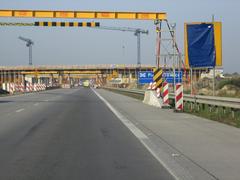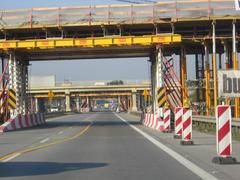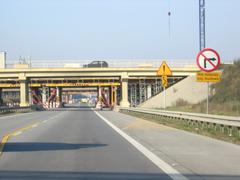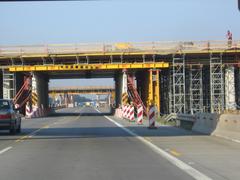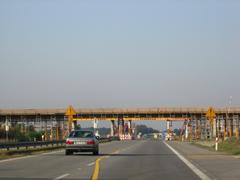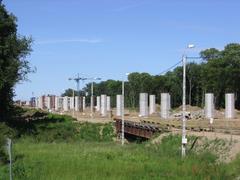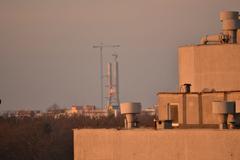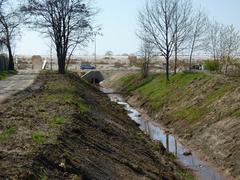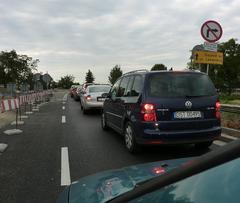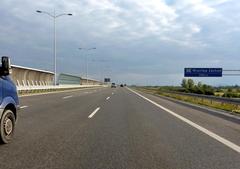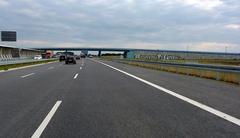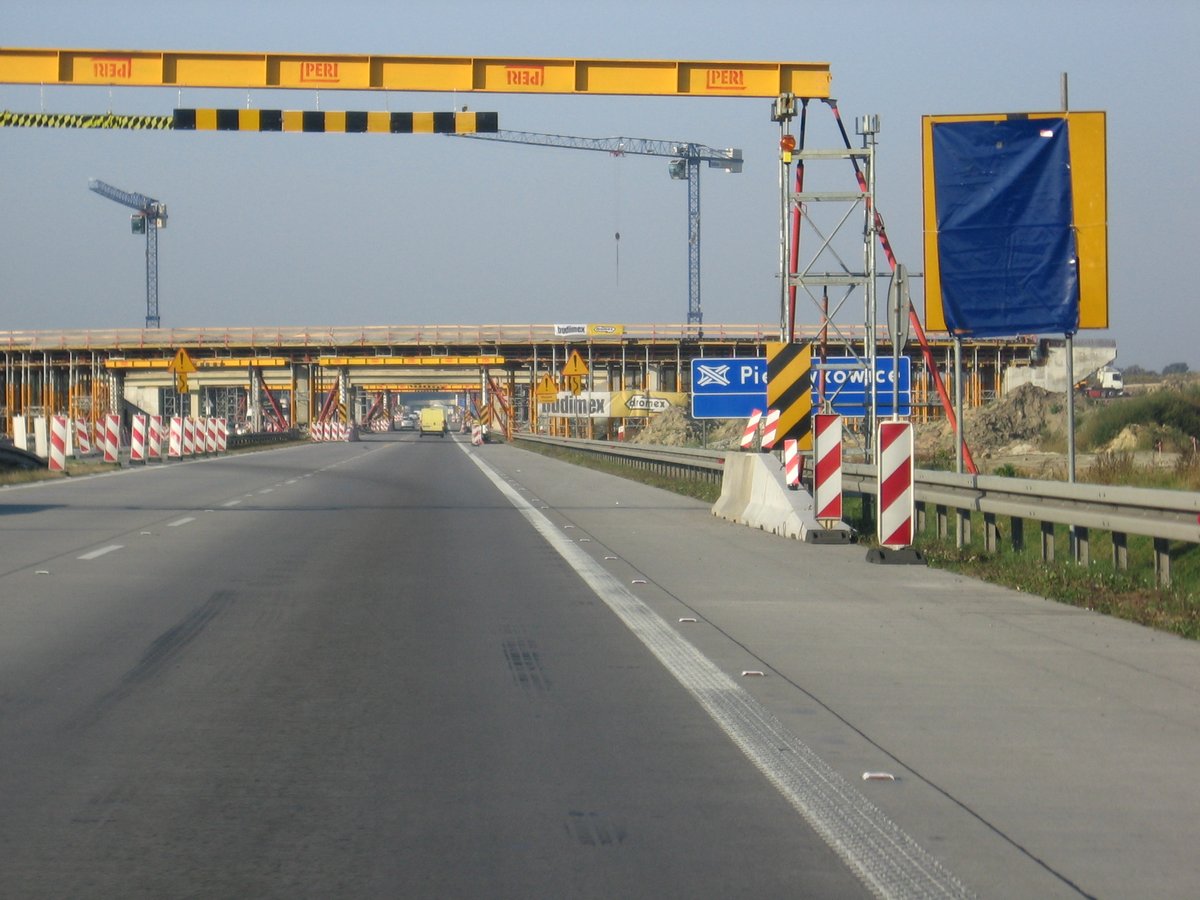
A Complete Guide to Visiting the A8 Autostrada in Wrocław, Poland: Tickets, Visiting Hours, and Practical Tips
Date: 14/06/2025
Introduction: The A8 Autostrada and Its Significance in Wrocław
Wrocław’s A8 Autostrada, locally known as the Autostradowa Obwodnica Wrocławia (AOW), is a crucial infrastructure project that has revolutionized transport and urban growth in southwestern Poland. Acting as the city’s primary bypass, the A8 links the A4 motorway with the S8 expressway, dramatically easing congestion and bolstering the region’s economic vitality. At its heart is the Rędziński Bridge, Poland’s tallest and longest cable-stayed bridge—a testament to modern Polish engineering and a symbol of the city’s progress. Since opening in 2011, timed ahead of UEFA Euro 2012, the A8 has improved mobility for residents, commuters, and visitors.
For travelers, the A8 offers toll-free travel for vehicles under 3.5 tons, multiple accessible interchanges, and well-equipped service areas. Although the motorway itself isn’t a traditional tourist spot, its engineering centerpiece, the Rędziński Bridge, is a sought-after attraction for those interested in architecture and infrastructure. While walking on the bridge is not allowed, numerous viewpoints along the Oder River and nearby parks offer excellent photographic and sightseeing opportunities.
This guide covers the A8’s history, engineering highlights, practical visitor information, and nearby attractions in Wrocław. You’ll also find travel tips and answers to common questions to ensure a seamless visit. For up-to-date information, consult the GDDKiA (Polish road authority) and the official Wrocław Tourism portals.
Table of Contents
- Introduction
- Historical Context and Strategic Importance
- Design, Construction, and Engineering Highlights
- Visitor and Traveler Information
- Visiting the Rędziński Bridge
- Exploring Wrocław’s Historical Sites via the A8
- Travel Tips for Using the A8
- Frequently Asked Questions (FAQ)
- Conclusion
- References
Historical Context and Strategic Importance
The A8 was designed in response to Wrocław’s rapid expansion and its pivotal location along major European corridors (E40 and E67). With a metropolitan population exceeding one million, the city required a modern road network to support economic development and safety.
First proposed in the 1970s, the A8 project stalled during the communist era but was revived post-2004, thanks to EU funding. Construction began in 2008 and concluded in 2011, just ahead of the Euro 2012 football championship, providing critical infrastructure for the event and the city’s long-term growth.
Design, Construction, and Engineering Highlights
Spanning 26.8 km, the A8 bypass encircles Wrocław’s northern and southern fringes, connecting key routes and facilitating efficient transit.
Rędziński Bridge
- Poland’s longest and tallest cable-stayed bridge (1.7 km long, 122 m high).
- Crosses the Oder River and stands as a landmark of engineering.
- Features a single central pylon and a dramatic cable arrangement.
Interchanges
- Major junctions include Wrocław Północ (S5/S8), Wrocław Zachód (A4), and Wrocław Południe (airport access).
- Designed for smooth, efficient transitions between highways and city roads.
Environmental Measures
- Incorporation of noise barriers, green corridors, and wildlife crossings.
- Soil stabilization and minimized impact on adjacent urban/historical areas.
Visitor and Traveler Information
While not a traditional monument, the A8 is essential for travelers:
- Access Points: Easily entered via Wrocław Północ, Wrocław Zachód, and Wrocław Południe.
- Tolls: Free for vehicles under 3.5 tons; trucks pay tolls.
- Facilities: Service areas offer fuel, restrooms, and food.
- Navigation: Bilingual signage (Polish/English) aids international visitors.
- Traffic Updates: Real-time info available from the GDDKiA website.
Visiting the Rędziński Bridge
History and Significance
Completed in 2011, the Rędziński Bridge is Wrocław’s modern icon—both an infrastructure marvel and a visual highlight of the city’s skyline. Its cable-stayed design and single 122-meter pylon make it the fourth largest concrete cable-stayed bridge in the world.
Location and Access
- Located on the A8, accessible by car or taxi via Wrocław Stadion or Wrocław Północ interchanges.
- Public transport can bring visitors close to viewing areas, though direct pedestrian access to the bridge is not permitted.
Visiting Hours and Tickets
- Vehicular Access: Open 24/7 as part of the motorway network.
- Pedestrian Access: Restricted; use designated viewpoints along the Oder River or nearby parks, open from dawn to dusk.
- Tickets: No tickets or fees are required to view the bridge from public areas.
Guided Tours and Educational Visits
- No formal tours operate on the bridge itself.
- Some local tour operators include bridge viewpoints in architectural or engineering tours—check Wrocław Tourism for current offerings.
Travel Tips and Visitor Recommendations
- Best Photo Opportunities: Sunrise and sunset provide dramatic lighting.
- Viewing Locations: Rędzin District and riverbanks offer unobstructed views.
- Safety: Do not attempt to walk or cycle on the bridge; use official viewpoints only.
- Parking: Available near Wrocław Stadion and other interchanges.
Nearby Attractions and Connectivity
- Wrocław Old Town: Market Square, Gothic Town Hall, and vibrant cafes.
- Ostrów Tumski: The city’s oldest district, filled with cathedrals and history.
- Centennial Hall: UNESCO-listed early 20th-century architectural gem.
- Wrocław Stadium: Accessible via the A8 for events and concerts.
- Oder River Promenades: Ideal for scenic walks and bridge views.
- Wrocław Zoo and Centennial Hall: Quickly reached from the A8.
Exploring Wrocław’s Historical Sites via the A8
The A8 provides efficient access to Wrocław’s renowned historical and cultural attractions, making it an ideal entry route for tourists arriving by road or from the airport (Wrocław Nicolaus Copernicus Airport). Park-and-ride facilities near interchanges allow for easy transitions to city transport.
Travel Tips for Using the A8 Autostrada
- Traffic: Expect congestion during rush hours and major events.
- Speed Limits: 120 km/h for passenger vehicles; average speed cameras are being introduced for safety (wroclaw.pl).
- Parking: Multiple park-and-ride areas near key interchanges.
- Facilities: Fuel stations and rest stops are well-placed along the route (dobaku.pl).
Frequently Asked Questions (FAQ)
Q: Is the A8 Autostrada toll-free?
A: Yes, for vehicles under 3.5 tons. Heavy trucks pay tolls.
Q: Can I walk or cycle on the Rędziński Bridge?
A: No, the bridge is a controlled-access motorway. Use nearby parks and riverbanks for views.
Q: Are there guided tours?
A: Some local operators offer architectural tours with bridge viewpoints; check ahead for availability.
Q: Where can I park near the bridge?
A: Public parking is available near Wrocław Stadion and at park-and-ride facilities.
Q: How do I get real-time traffic updates?
A: Visit the GDDKiA website or use navigation apps.
Visual Gallery
The Rędziński Bridge illuminated at sunset.
Close-up of the bridge’s cable-stayed design.
Summary Table
| Feature | Details |
|---|---|
| Monument Name | Rędziński Bridge |
| Location | Wrocław, Poland |
| Type | Cable-stayed motorway bridge |
| Length | 1.7 km (main span: 256 m) |
| Pylon Height | 122 meters |
| Vehicle Access | 24/7 |
| Pedestrian Access | Restricted; viewpoints accessible from dawn to dusk |
| Entry Fee | Free viewing from public areas |
| Facilities | Nearby parking, rest stops, and service areas |
| Nearby Attractions | Wrocław Old Town, Cathedral, Centennial Hall, Wrocław Stadium |
| Guided Tours | Available via local operators (viewpoints only) |
| Best Time to Visit | Sunrise, sunset, and evenings for illuminated views |
Conclusion
The A8 Autostrada and the Rędziński Bridge together symbolize Wrocław’s commitment to innovation, accessibility, and sustainable urban mobility. The motorway’s strategic design has eased city-center congestion and fostered connectivity throughout Lower Silesia. For travelers, the A8 offers a seamless route to Wrocław’s historic and modern sights, while the Rędziński Bridge provides a striking example of contemporary engineering.
While direct pedestrian access to the bridge is restricted, well-placed viewpoints along the Oder River allow everyone to admire its architectural grandeur. The proximity to Wrocław’s Old Town, Centennial Hall, and Ostrów Tumski ensures every visit is rich in both history and modern achievement.
For the most current travel information, always refer to official resources such as the GDDKiA and Wrocław Tourism Website.
References
- A8 Autostrada in Wrocław: History, Engineering, and Visitor Information, 2025, Unattributed (GDDKiA)
- Wrocław’s Rędziński Bridge: Visiting Hours, Tickets, and Exploring a Modern Engineering Monument, 2025, Unattributed (Wrocław Tourism)
- Visiting the Rędziński Bridge and Exploring Wrocław’s A8 Autostrada Corridor: A Guide for Tourists, 2025, Unattributed (visitwroclaw.eu)
- Visiting the Rędziński Bridge in Wrocław: Hours, Tickets, and Practical Visitor Tips, 2025, Unattributed (conadrogach.pl)
- Wrocław Nicolaus Copernicus Airport, 2025, Unattributed (airport.wroclaw.pl)
